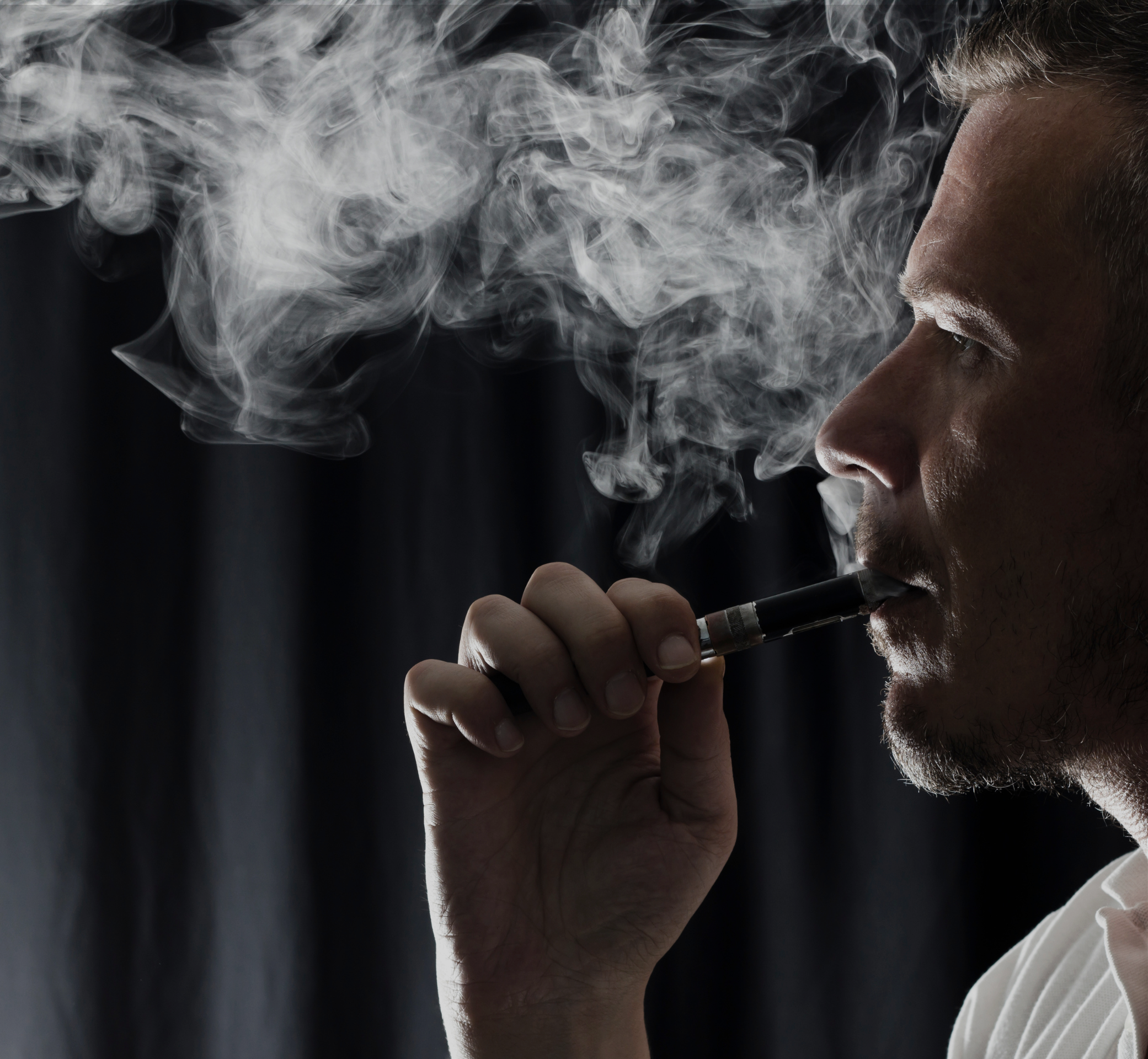Πηγές ENDS Άμστερνταμ:
Είναι οι γεύσεις ατμίσματος επιβλαβείς;
Όχι. Σύμφωνα με το Έκθεση SCHEER της ΕΕ“Μέχρι σήμερα, δεν υπάρχουν συγκεκριμένα δεδομένα που να δείχνουν ότι συγκεκριμένες αρωματικές ύλες που χρησιμοποιούνται στην ΕΕ ενέχουν κινδύνους για την υγεία των χρηστών ηλεκτρονικού τσιγάρου μετά από επαναλαμβανόμενη έκθεση.”
Χρησιμοποιούνται οι γεύσεις μόνο για εφήβους;
Παρόλο που η χρήση αρωμάτων αναφέρεται συχνότερα σε νεότερες ηλικιακές ομάδες, οι αρώματα δεν απευθύνονται μόνο σε νεαρούς χρήστες και σίγουρα δεν απευθύνονται σε ανήλικους.
Διάφορες μελέτες δείχνουν ότι οι γεύσεις είναι χρησιμοποιείται συνήθως από τακτικούς ατμιστές όλων των ηλικιακών ομάδων. Στις Ηνωμένες Πολιτείες και τον Καναδά, εκτιμάται ότι περίπου τα δύο τρίτα των ενήλικων ατμιστών χρησιμοποιούν αρώματα. Στην Ευρώπη, τα τελευταία Ευρωβαρόμετρο για τις στάσεις των Ευρωπαίων απέναντι στον καπνό και τα ηλεκτρονικά τσιγάρα δείχνει ότι, μεταξύ εκείνων που ατμίζουν τουλάχιστον σε μηνιαία βάση, σχεδόν οι μισοί (48%) χρησιμοποιούν φρουτώδεις γεύσεις και οι 20% χρησιμοποιούν γεύσεις καραμέλας. Μια άλλη πρόσφατη μελέτη διαπίστωσε ότι “μόνο το 2.1% ανέφερε τον καπνό ως τη μοναδική πιο συχνά χρησιμοποιούμενη” γεύση.
Εξάλλου, Οι διαφορές στη χρήση γεύσεων μεταξύ των ηλικιακών ομάδων είναι μικρές. Στις Ηνωμένες Πολιτείες, για παράδειγμα, το ποσοστό όσων χρησιμοποιούσαν ηλεκτρονικά τσιγάρα με γεύση ήταν 89,61% για ενήλικες ηλικίας 18-24 ετών, 86,71% για άτομα ηλικίας 25-34 ετών, 76,01% για άτομα ηλικίας 35-44 ετών και 60,41% για άτομα ηλικίας 45 ετών και άνω, πράγμα που σημαίνει ότι οι γεύσεις χρησιμοποιούνται από τη συντριπτική πλειοψηφία των χρηστών σε όλες τις ηλικιακές ομάδες.
ΕΝΑ μελέτη διαπίστωσαν ότι “σε σχέση με το άτμισμα γεύσεων καπνού, το άτμισμα ηλεκτρονικών τσιγάρων χωρίς γεύση καπνού δεν συσχετίστηκε με αυξημένη έναρξη καπνίσματος από τους νέους”.
Ποιος είναι ο ρόλος των γεύσεων στη διακοπή του καπνίσματος;
Οι γεύσεις δεν αυξάνουν μόνο την ελκυστικότητα για τους ενήλικες, αλλά είναι επίσης απαραίτητες για τους καπνιστές που προσπαθούν να κόψουν το κάπνισμα. Σύμφωνα με τον Δρ. Κόλιν Μέντελσον, μη υπενθυμίζοντας στους ατμιστές τη γεύση του καπνού, οι γεύσεις είναι πιο πιθανό να κρατήσουν τους ανθρώπους μακριά από τα παραδοσιακά τσιγάρα: “Οι γεύσεις αποτελούν σημαντικό μέρος της ελκυστικότητας του ατμίσματος για τους ενήλικες καπνιστές και καθιστούν τα προϊόντα ελκυστικά ως εναλλακτική λύση στο κάπνισμα, όπως ακριβώς οι γεύσεις χρησιμοποιούνται επίσης για να ενισχύσουν την ελκυστικότητα της τσίχλας νικοτίνης. Η απαγόρευση των γεύσεων πιθανότατα θα υπονόμευε τη χρήση των ηλεκτρονικών τσιγάρων και τα οφέλη για τη δημόσια υγεία”.”
Οι γεύσεις ατμίσματος δεν είναι μόνο καθοριστικές για να βοηθήσουν τους καπνιστές να αλλάξουν, αλλά και για να διασφαλίσουν ότι δεν θα ξαναρχίσουν το κάπνισμα. Σύμφωνα με τη Σχολή Δημόσιας Υγείας του Γέιλ, οι συσκευές ατμίσματος με γεύσεις σχετίζονται με... 230% αύξηση στις πιθανότητες διακοπής του καπνίσματος σε ενήλικες.
Friedman, AS κ.ά. (2020) διαπίστωσαν ότι “οι ενήλικες που άτμιζαν ηλεκτρονικά τσιγάρα με γεύση ήταν πιο πιθανό να σταματήσουν το κάπνισμα στη συνέχεια από εκείνους που χρησιμοποιούσαν ηλεκτρονικά τσιγάρα χωρίς γεύση” και “οι ενήλικες που άρχισαν να άτμιζαν ηλεκτρονικά τσιγάρα χωρίς γεύση καπνού ήταν πιο πιθανό να σταματήσουν το κάπνισμα από εκείνους που άτμιζαν αρώματα καπνού”.
Όταν απαγορεύτηκε, το Πανεπιστήμιο του Γουότερλου διαπίστωσε ότι 5 στους 10 ατμιστές θα στρεφόντουσαν σε παράνομες πηγές για να αγοράσουν συσκευές με αρώματα ή θα επέστρεφαν στο κάπνισμα τσιγάρων.. Οι απαγορεύσεις αρωμάτων ενέχουν τον κίνδυνο αύξησης της κατανάλωσης καπνού και της συχνότητας εμφάνισης καρκίνου, περιορίζοντας τη διακοπή του καπνίσματος και αναγκάζοντας τους ατμιστές να επιστρέψουν στο κάπνισμα τσιγάρων. Η νομοθεσία για τις αρώματα ατμίσματος πρέπει να λαμβάνει υπόψη αυτό το γεγονός και προτρέπουμε τους νομοθέτες να μην εφαρμόσουν ευρέως τέτοιες απαγορεύσεις.
Είναι οι γεύσεις η αιτία της επιδημίας του ατμίσματος και του καπνίσματος στους νέους;
Όχι. Δεν υπάρχουν στοιχεία που να συνδέουν τις γεύσεις του ατμίσματος με το κάπνισμα σε εφήβους ή ανηλίκους, ενώ πολλές μελέτες δείχνουν πώς άλλοι κοινωνικοοικονομικοί και περιβαλλοντικοί παράγοντες κρύβονται πίσω από την έναρξη του ατμίσματος ή των τσιγάρων από παιδιά. Παράγοντες όπως χαρακτηριστικά προσωπικότητας, γενετική προδιάθεση, οι καπνιστικές συνήθειες των γονέων και το εισόδημα του νοικοκυριού πρέπει να λαμβάνονται υπόψη κατά τον προσδιορισμό του λόγου για τον οποίο οι έφηβοι ατμίζουν ή καπνίζουν. Το πρόβλημα είναι ότι οι περισσότερες μελέτες λαμβάνουν υπόψη μόνο λίγους κοινούς παράγοντες κινδύνου. Μια εις βάθος ανάλυση μπορεί να βρεθεί εδώ.
ΕΝΑ μελέτη Σε έρευνα που διεξήχθη από τους Kevin Tan, Jordan P. Davis, Douglas C. Smith και Wang Yang το 2020, διαπιστώθηκε ότι οι έφηβοι που ήταν λιγότερο ικανοποιημένοι με τη ζωή τους, γενικά, ήταν πιο πιθανό να αναζητήσουν επικίνδυνες εμπειρίες και έχουν μεγαλύτερη τάση να χρησιμοποιούν παράνομες ουσίες τακτικά. Ως εκ τούτου, τα ηλεκτρονικά τσιγάρα δεν αποτελούν πύλη για το κάπνισμα, αλλά μάλλον οι κακές συνθήκες στη ζωή των εφήβων οδηγούν σε διάφορες επικίνδυνες συμπεριφορές. Η ίδια μελέτη διαπίστωσε ότι το άτμισμα φαίνεται να αποσπά ένα υποσύνολο νέων που διατρέχουν υψηλό κίνδυνο καπνίσματος τσιγάρων από το κάπνισμα.
ΕΝΑ ανασκόπηση δεκαπέντε μελετών δημοσιεύτηκε το 2019 και ανέφερε ότι “δεν έχει ακόμη αποδειχθεί ένα πραγματικό φαινόμενο πύλης εισόδου στους νέους”. Σύμφωνα με ερευνητές από το Πανεπιστήμιο της Νέας Νότιας Ουαλίας στο Σίδνεϊ και το Πανεπιστήμιο του Κουίνσλαντ στο Χέρστον, Τουλάχιστον 70-85% όλων των εφήβων δοκιμάζουν άτμισμα αφού έχουν ήδη ξεκινήσει το κάπνισμα, και το τακτικό άτμισμα είναι πολύ σπάνιο (κάτω από 0,5%) μεταξύ εφήβων που δεν καπνίζουν.
Αλλος μελέτη διαπίστωσαν ότι “σε σχέση με το άτμισμα γεύσεων καπνού, το άτμισμα ηλεκτρονικών τσιγάρων χωρίς γεύση καπνού δεν συσχετίστηκε με αυξημένη έναρξη καπνίσματος σε νέους, αλλά συσχετίστηκε με αύξηση των πιθανοτήτων διακοπής του καπνίσματος σε ενήλικες”.
Επιπλέον, υπάρχουν ενδείξεις ότι οι νέοι άτμισμα και κάπνισμα έχουν μειωθεί ραγδαία τα τελευταία χρόνια: “η χρήση τσιγάρων και μη καπνιζόμενου καπνού μειώθηκε ταχύτερα από το 2012, καθώς η χρήση ηλεκτρονικών τσιγάρων άρχισε να αυξάνεται. Το κάπνισμα και η χρήση μη καπνιζόμενου καπνού έφτασαν σε ιστορικά χαμηλά επίπεδα μεταξύ των εφήβων στις ΗΠΑ”. Παρόμοια στοιχεία μπορούν να βρεθούν στο Γερμανία, ενώ στο Ηνωμένο Βασίλειο “Τα ποσοστά καπνίσματος στους νέους βρίσκονται σε ιστορικά χαμηλά επίπεδα και η χρήση ηλεκτρονικών τσιγάρων από νέους (11-18 ετών) είναι σπάνια και περιορίζεται σε μεγάλο βαθμό σε όσους ήδη καπνίζουν τσιγάρα”.
Καθηγητής Πολόσα, σε μια μελέτη που δημοσιεύθηκε το 2020, συνοψίζει το μοτίβο χρήσης ηλεκτρονικού τσιγάρου από τους νέους ως εξής: “Η χρήση ηλεκτρονικού τσιγάρου έχει αυξηθεί σημαντικά μεταξύ των μαθητών λυκείου και των νεαρών ενηλίκων την τελευταία δεκαετία, αλλά ευτυχώς έχει μειωθεί σημαντικά από την κορύφωσή της το 2019. Κατά την ίδια χρονική περίοδο, τα ποσοστά καπνίσματος μειώνονται συνεχώς σε νέα χαμηλά επίπεδα ρεκόρ. Αυτές οι τάσεις καταρρίπτουν τη χρήση του ηλεκτρονικού τσιγάρου ως πύλη εισόδου στο κάπνισμα. Η χρήση του ηλεκτρονικού τσιγάρου είναι ως επί το πλείστον σπάνια και είναι απίθανο να αυξήσει τον κίνδυνο αρνητικών επιπτώσεων στην υγεία ενός ατόμου. Επιπλέον, η πλειονότητα της χρήσης του ηλεκτρονικού τσιγάρου έχει συμβεί μεταξύ εκείνων που έχουν καπνίσει στο παρελθόν”.
Μπορούν οι απαγορεύσεις αρωμάτων να βελτιώσουν τη δημόσια υγεία;
Υπάρχουν ισχυρά στοιχεία που δείχνουν ότι η απαγόρευση δεν λειτουργεί και ότι η απαγόρευση των αρωμάτων θα πλήξει δυσανάλογα τους καταναλωτές που προσπαθούν να διακόψουν το κάπνισμα και αντιβαίνει στους στόχους οποιασδήποτε αρχής δημόσιας υγείας.
Η βιβλιογραφία υποδηλώνει ότι η απαγόρευση των αρωμάτων ατμίσματος θα οδηγήσει τους χρήστες στη μαύρη αγορά ή θα επιστρέψει στο κάπνισμα, κάτι που έχει επιβεβαιωθεί από προηγούμενες εμπειρίες. απαγόρευση αρωμάτων στο Σαν Φρανσίσκο είχε ως αποτέλεσμα την αύξηση των ποσοστών καπνίσματος μεταξύ των εφήβων για πρώτη φορά εδώ και δεκαετίες, ενώ ένα απαγόρευση αρωμάτων στη Μασαχουσέτη είχε ως αποτέλεσμα την αύξηση των πωλήσεων τσιγάρων.
Ένα πιο πρόσφατο και πιο κοντινό παράδειγμα είναι αυτό του Εσθονία. Η Εσθονία απαγόρευσε τις γεύσεις το 2020 και το αποτέλεσμα ήταν ότι 60% ατμιστών συνέχισαν να τις χρησιμοποιούν αναμειγνύοντας τα δικά τους υγρά ή προμηθεύοντάς τα από τη μαύρη αγορά χωρίς κανέναν έλεγχο ποιότητας ή ασφάλειας.
Ως αποτέλεσμα, αναμένουμε ότι οι απαγορεύσεις γεύσεων θα οδηγήσουν τους περισσότερους χρήστες στη μαύρη αγορά, όπου τα προϊόντα δεν συμμορφώνονται με κανέναν κανονισμό ασφαλείας και μπορούν να είναι επιβλαβή για την υγεία. Άλλοι χρήστες θα αναγκαστούν να επιστρέψουν στο κάπνισμα τσιγάρων, αυξάνοντας έτσι το κάπνισμα και τα κρούσματα καρκίνου και βλάπτοντας τη δημόσια υγεία. Αλλά η απαγόρευση σε καμία περίπτωση δεν θα μειώσει το άτμισμα στους νέους. Αν επρόκειτο μόνο για τη γεύση, κανείς δεν θα είχε αρχίσει ποτέ το κάπνισμα. Η γεύση και η μυρωδιά της στάχτης, του καπνού και του θανάτου δεν αποθάρρυναν τους νέους στο παρελθόν - επομένως ούτε μια απαγόρευση γεύσεων θα αποτρέψει τους νέους.
Οι απαγορεύσεις θα ήταν ένα εύκολο βήμα για τους πολιτικούς, αλλά όχι μια λύση στο πρόβλημα. Όπως αναφέραμε, οι νέοι που είναι δυσαρεστημένοι με τη ζωή τους τείνουν να κάνουν πιο επικίνδυνα πράγματα γενικά. Παράγοντες όπως το άγχος, οι συνήθειες καπνίσματος των γονέων, οι συμπεριφορές των συνομηλίκων, τα κακά σχολεία και το εισόδημα των νοικοκυριών πρέπει να ληφθούν υπόψη με τη σειρά τους. Ας υποθέσουμε λοιπόν ότι οι πολιτικοί και οι ομάδες κατά του ατμίσματος θέλουν πραγματικά να βοηθήσουν τους εφήβους: θα πρέπει να κάνουν εκστρατεία για καλύτερα σχολεία, συστήματα υγειονομικής περίθαλψης και οικονομικές συνθήκες ώστε οι γονείς τους να τα βγάζουν πέρα (ή να παραδεχτούν ότι δεν πρόκειται για νέους ανθρώπους, αλλά απλώς μια δικαιολογία για την απαγόρευση του ατμίσματος για όλους).
Πρόσθετες πηγές:
- Εκστρατεία WVA “Νίκησε το κάπνισμα σαν τους Σουηδούς”: https://worldvapersalliance.com/beat-smoking-like-the-swedes/
- Farsalinos, Polosa, et. al. (2023): Πρότυπα χρήσης αρωματισμένων ηλεκτρονικών τσιγάρων μεταξύ ενηλίκων ατμιστών στις Ηνωμένες Πολιτείες: https://www.researchsquare.com/article/rs-2658498/v1
- Μείωση του καπνίσματος στους ενήλικες 2012-2022 ετησίως: https://worldvapersalliance.com/wp-content/uploads/2023/03/WVA_Sweden_Factsheet.pdf
- Ποσοστό καπνίσματος/ατμίσεως Ολλανδία, Εσθονία, Σουηδία: https://europa.eu/eurobarometer/surveys/browse/all/series/29712
- Ποσοστά καρκίνου του πνεύμονα NL, EST, SW: Ευρωπαϊκή Επιτροπή
- Έρευνα στην Εσθονία, κατανάλωση αρωμάτων: https://tholosfoundation.org/wp-content/uploads/2022/05/Presentation-Estonia-.pdf
- Δεν υπάρχει καμία ορατή επίδραση στην πύλη εισόδου. Ποσοστά καπνίσματος στην Ευρώπη: https://europa.eu/eurobarometer/surveys/browse/all/series/29712
- Κάπνισμα/κατανάλωση νικοτίνης από εφήβους στις ΗΠΑ: CDC
- Κοινή ευθύνη: https://www.ncbi.nlm.nih.gov/pmc/articles/PMC3600369/
- Παράνομη κατανάλωση ναρκωτικών: https://monitoringthefuture.org/results/publications/monographs/
- Απαγορεύσεις αρωμάτων στις πολιτείες των ΗΠΑ – ποσοστά καπνίσματος από εφήβους: https://www.protectingtaxpayers.org/e-cigarettes/op-ed-more-millions-from-bloomberg-to-push-bans-will-cause-greater-harm-than-good/





